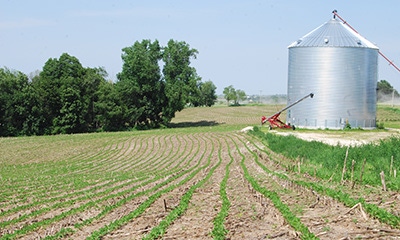May 20, 2016

It was weather, albeit South America’s, that finally moved the futures markets this spring. Soybeans benefitted the most, as Argentina, the third largest soybean producing country in the world, received heavy rainfall. The July soybean futures markets rallied more than $2 per bushel from early March to second week of May.
.jpg?width=600&auto=webp&quality=80&disable=upscale)
Source: jimwyckoff.com May 12, 2016

ADDED DEMAND: In its latest supply-demand estimates released May 10, USDA raised its corn demand projections for feed use, exports and corn used for ethanol. The big crops expected to be produced in 2016 won’t be as burdensome on prices as previously forecast—if the higher demand projections are on track.
Prior to the confirmed weather problems in Argentina, the decline in the U.S. dollar index and neutral USDA Prospective Planting report numbers reduced the bearish concerns for soybean prices heard most the winter. Then the perfect storm – excessive rainfall in Argentina during harvest – brought additional speculative buying by the commodity funds.
Will corn futures prices rally?
We’ve known for months it was likely going to take something weather-related to get the grain markets to move upward. This spring, we have weather in both hemispheres playing out. Before getting too bullish on corn futures prices, consider having some orders in place with your grain merchandiser and/or commodity broker.
Expect the corn futures markets to attempt to retrace back to their April 21 highs. Wet weather in some parts of the U.S. and northeast China has created planting concerns. Corn planting progress in Ohio, Indiana and Michigan have slowed. This could reduce the number of acres that will actually get planted to corn this spring. However, many of those acres will likely be planted to soybeans, putting downward pressure on the recent price rally.
Using the July Corn futures chart, expect another run at the April 21 high of $4.07¼. Note on the chart below this is near the 50% Fibonacci retracement level of $4.11 per bushel, a likely chart objective. This level was measured from the chart high of $4.71¼ realized last July and the chart low of $3.51¼ from April 1.
.jpg?width=600&auto=webp&quality=80&disable=upscale)
Source: jimwyckoff.com May 2, 2016
New crop December corn
This spring, the fundamentals for corn haven’t been near as supportive as they were for soybeans. The U.S. prospective planted corn acres forecast a large 93.6 million acres on March 31 in the USDA Prospective Planting Report which created a selloff in futures prices.
Most of the U.S. growing season still lies ahead. The trendline yield of 168 bushel per acre used by the USDA World Agricultural Supply and Demand Estimates (WASDE) report published May 10 may be difficult to reach without a good growing weather as was realized in 2015.
However, recent wet weather forecasts should continue to delay corn planting. December corn futures rallied to $4.03 per bushel on May 18. That’s just 6 cents off their April 21 highs of $4.09.
Expect the December Corn futures chart to make another run at this April 21 high. Another likely price objective to be at the 50% Fibonacci retracement level of $4.05¼, a likely chart objective. This level was measured from the chart high of $4.46½ recorded last July and the chart low of $3.64 from April 1.

Source: jimwyckoff.com May 2, 2016
La Niña watch issued
The Australian Bureau of Meteorology recently issues a La Niña Watch. That was based on recent changes in the tropical Pacific Ocean and atmosphere, combined with current climate model outlooks. Such a Watch means that there is approximately a 50% chance of a La Niña developing in 2016.
However, what happens if the negative impacts of La Niña weather events are not be realized during the U.S. crop growing season? Then the odds of producing a U.S. corn crop with a trendline yield of 168 bushel per acre or larger will increase.
Summary: Plan now to use old and new crop marketing strategies
Without major widespread weather concerns, don’t expect the corn futures prices to exceed the April highs in both the July and December corn futures contracts. Much of the U.S. corn crop was planted in a timely fashion with good emergence and stand counts. Adequate subsoil moisture levels should bode well should dry summer weather be realized.
Weather continues to be the primary factor that rallies the corn futures market. Consider having price objectives in place now. Using the July corn futures chart, reasonable objectives appear in a range of $3.97 to $4.07 per bushel. The December corn futures price objectives range from $4.05 to $4.09 per bushel.
Consider planning now using those old and new crop marketing strategies using these price level objectives. Have orders in place that will trigger old crop sales to avoid holding large volumes of bushels beyond early July. Make new crop sales that will generate cash flow this fall and winter.
For farm management information and analysis visit ISU's Ag Decision Maker site extension.iastate.edu/agdm; ISU Extension farm management specialist Steve Johnson's site is at extension.iastate.edu/polk/farm-management.
Editor’s Note: Steve Johnson is the Iowa State University Extension farm management specialist for central Iowa.
You May Also Like




